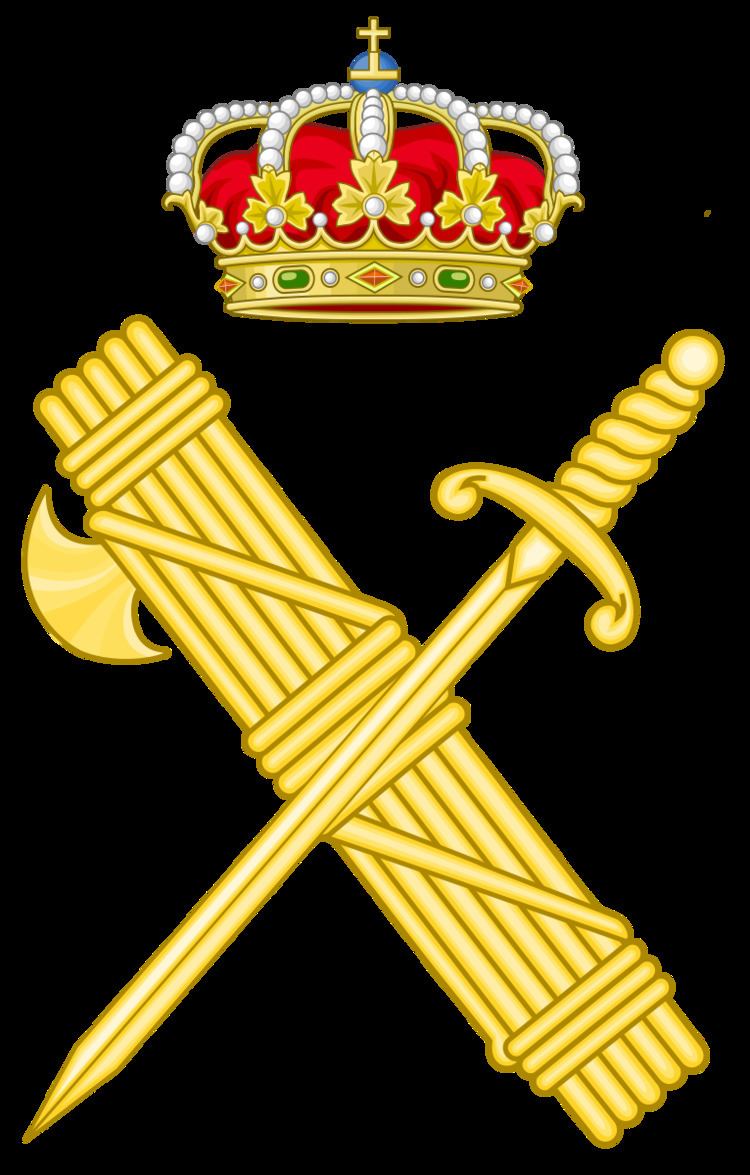Abbreviation GC Dissolved 1898 | Formed 1868 | |
 | ||
Motto El honor es mi divisaHonour is my emblem Legal personality Governmental: Government agency | ||
The Civil Guard in the Philippines (Spanish: Guardia Civil en las Filipinas) was the branch of the Guardia Civil organised under the Spanish colonial government in the Philippines. It was disbanded after the Spanish–American War and was replaced by the Philippine Constabulary.
Contents
History
In the Philippines, the Guardia Civil was introduced by the Spanish colonial government in 1868, during the term of Governor-General Carlos María de la Torre y Nava Cerrada. The organization began with a size of one division or around 1,200 men. By 1880, and this size was maintained until 1897, the Guardia Civil in the Philippines had a size of three divisions or more than 3,600 men. Two were stationed in Luzon and the third in the Visayas.
Role
The Guardia Civil in the Philippines followed closely the organisation of the metropolitan institution. Officers were drawn from the regular Spanish army. Under normal conditions, they formed patrols consisting of two men. Larger detachments were organized for operations such the suppression of bandit groups. By 1897, the force had 155 Spanish officers.
The Guardia Civil had the power to impose penalties for infringements of law and local ordinances. They could arrest people upon suspicion alone, and the Spanish colonial government did not bar the Guardia Civil from using torture techniques in interrogation processes. They could also kill suspects without trial if resistance was offered.
During the first phase of the Philippine Revolution (1896-1897), the Guardia Civil comprised around 60 percent of the native component of the Spanish military forces in the colony.
Guardia Civil Veterana
The Guardia Civil Veterana or Veteran Civil Guard was formed during the period 1871 to 1872 under the Governor-General Rafael de Izquierdo y Gutiérrez to be the urban gendarmerie force of Manila. This organization began with 37 officers and 322 men as of July 11, 1872. By 1898, it had 14 officers and 325 men.
Criticism
The works of the Guardia Civil can also be witnessed in José Rizal's fictional novels, Noli Me Tángere and El filibusterismo.
In terms of the interrogation process, Rizal describes in the 57th chapter of Noli Me Tángere how a man named Tarsilo was tortured to death by the Guardia Civil. In that same part of the book, it is recorded that a certain Andong Sintó-sintó was sent to the capital, Manila, to be imprisoned for merely picking bananas for supper.
In the fifth chapter of El filibusterismo, a cochero or coachman is held up, hit and taken to prison by an officer of the Guardia Civil for failing to show his cédula (a term now used for the community tax certificate).
